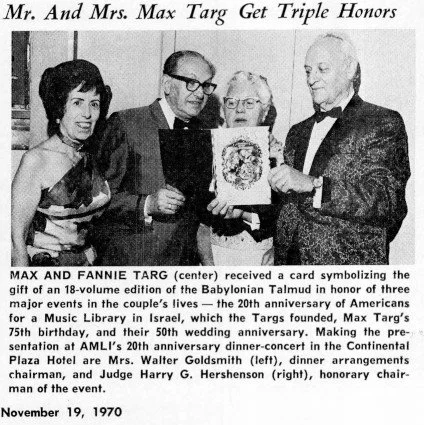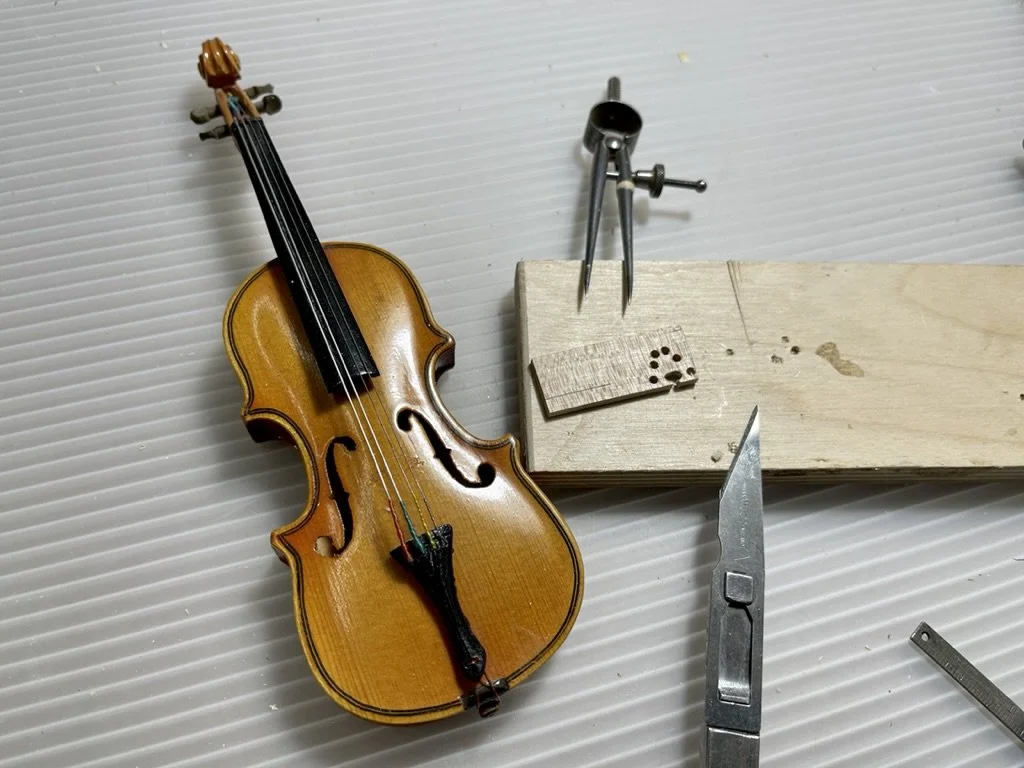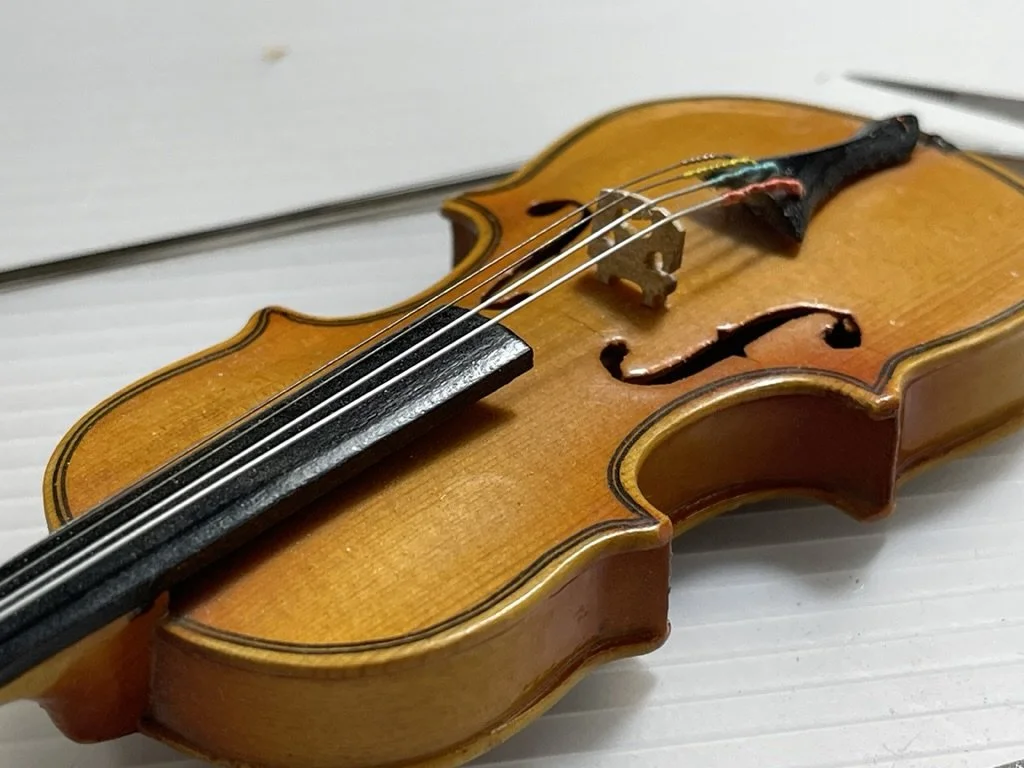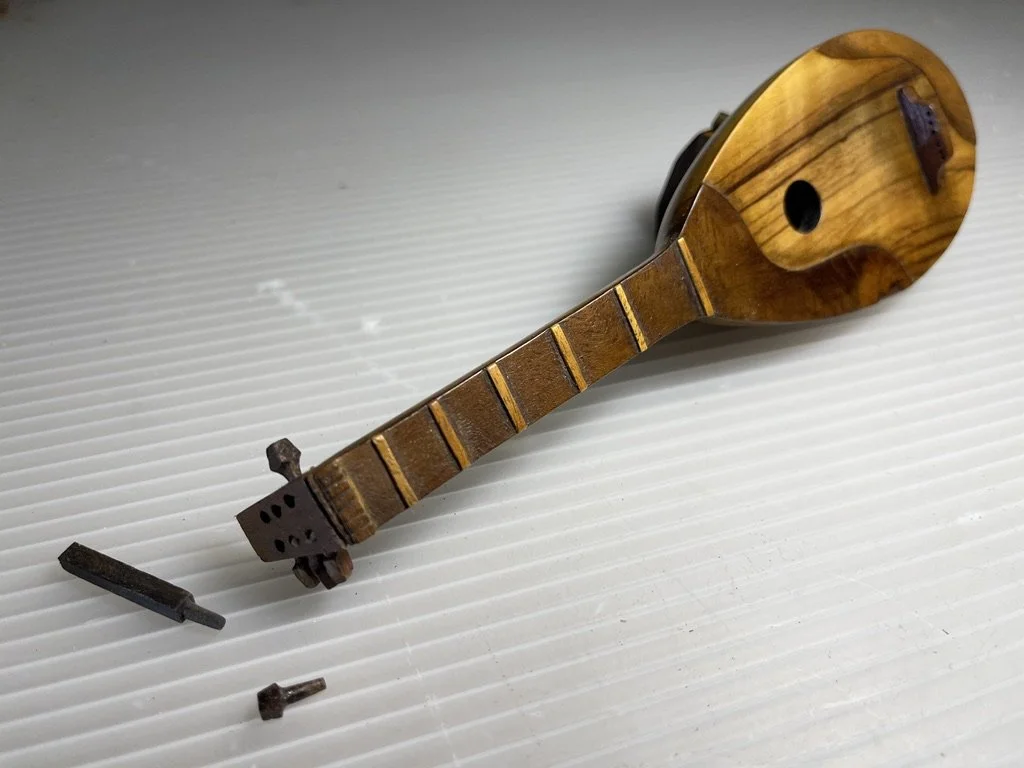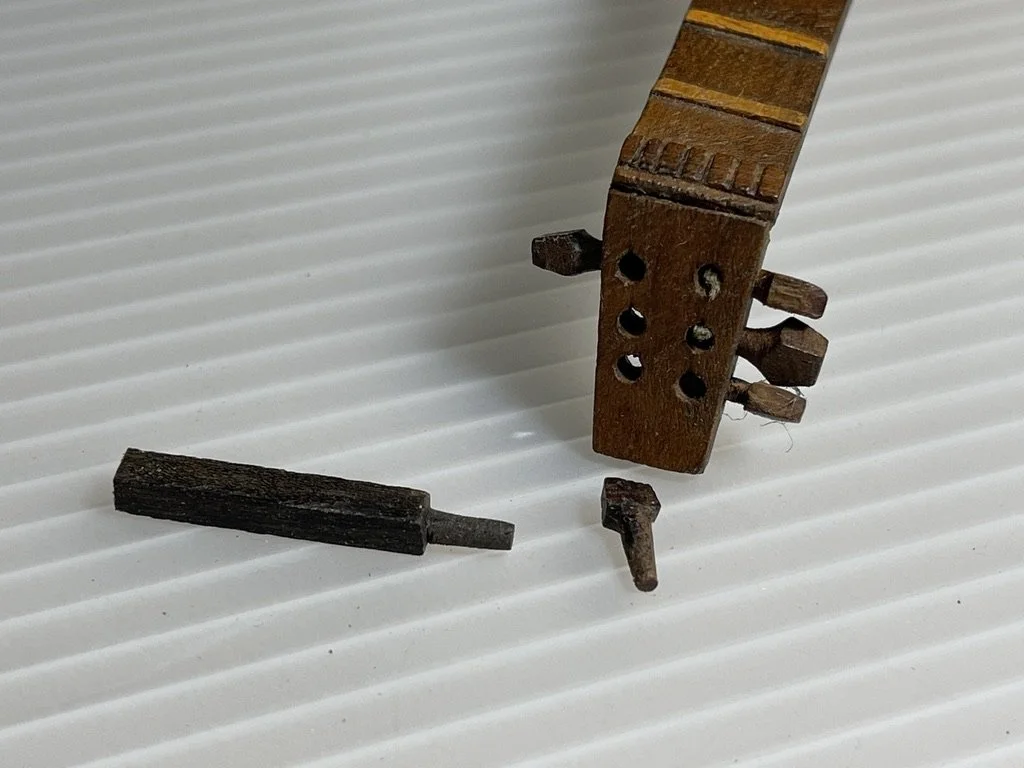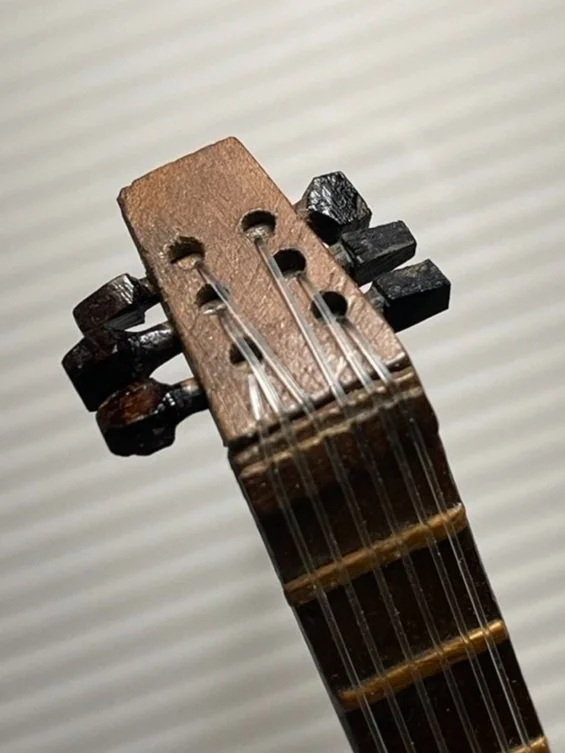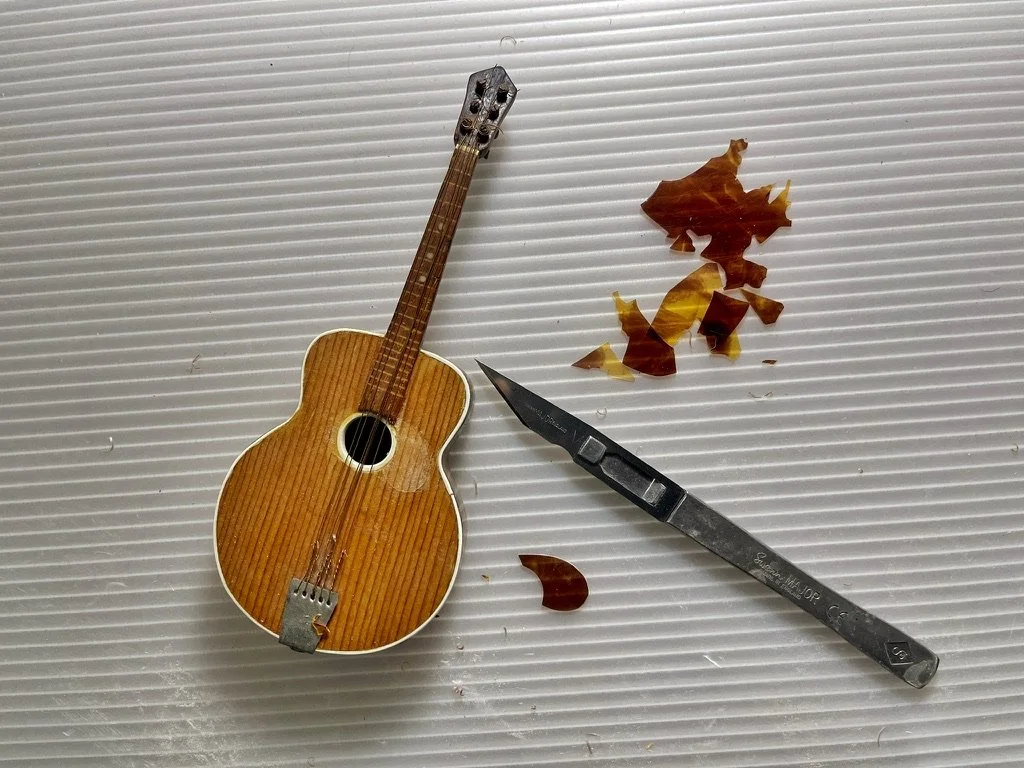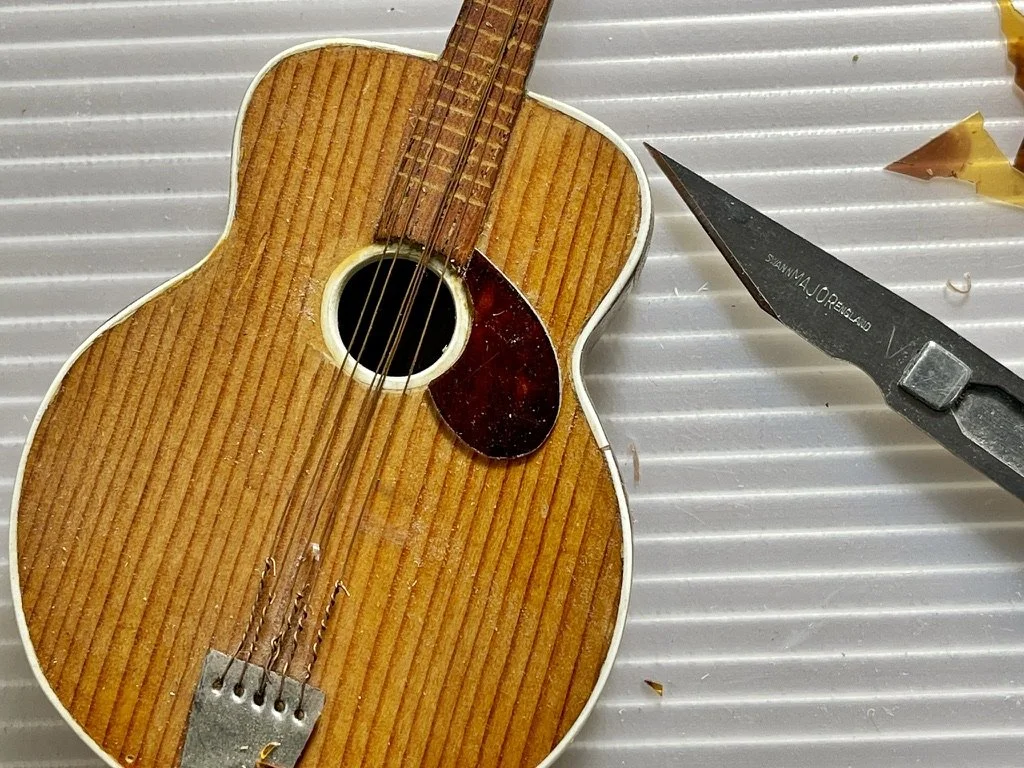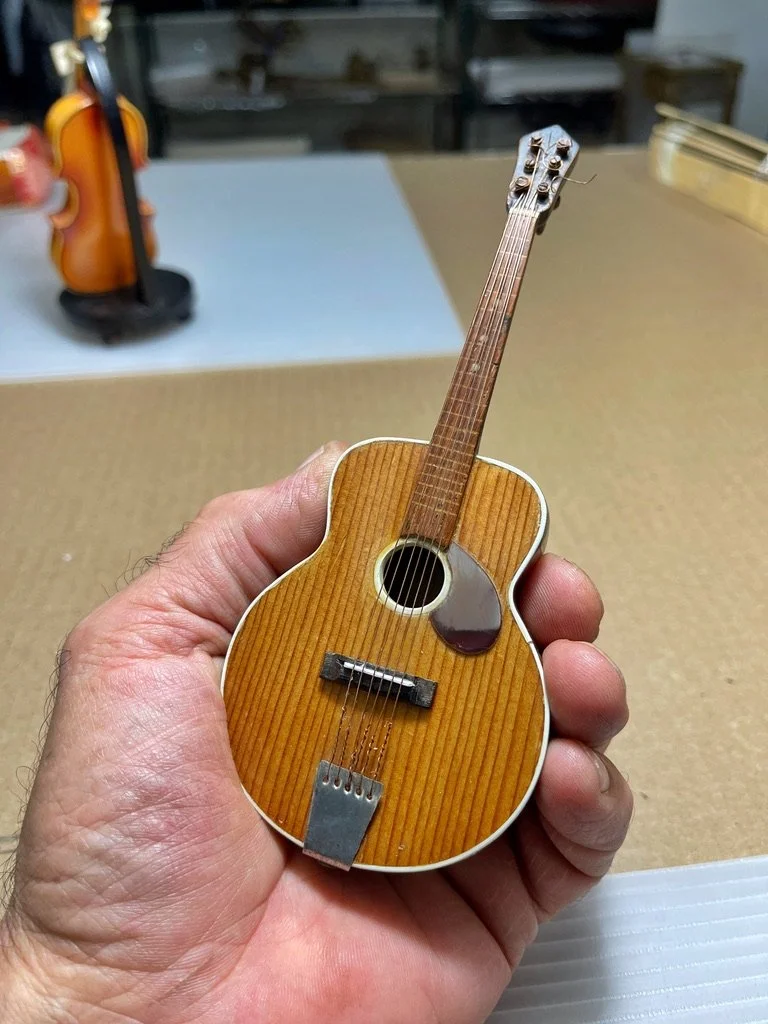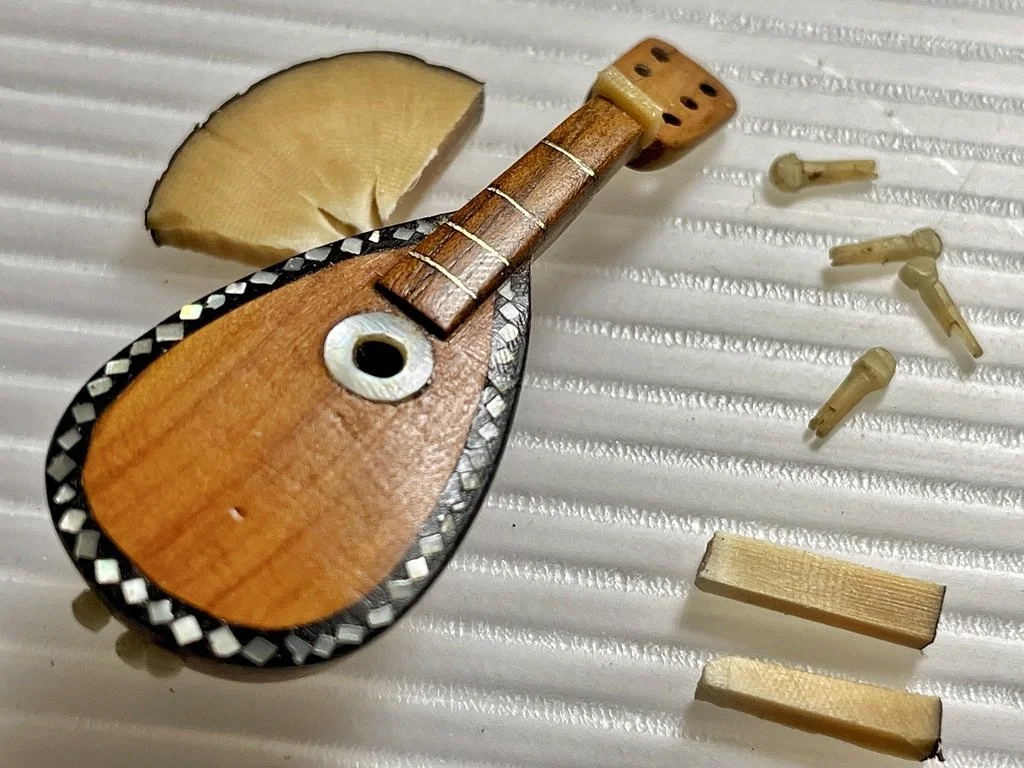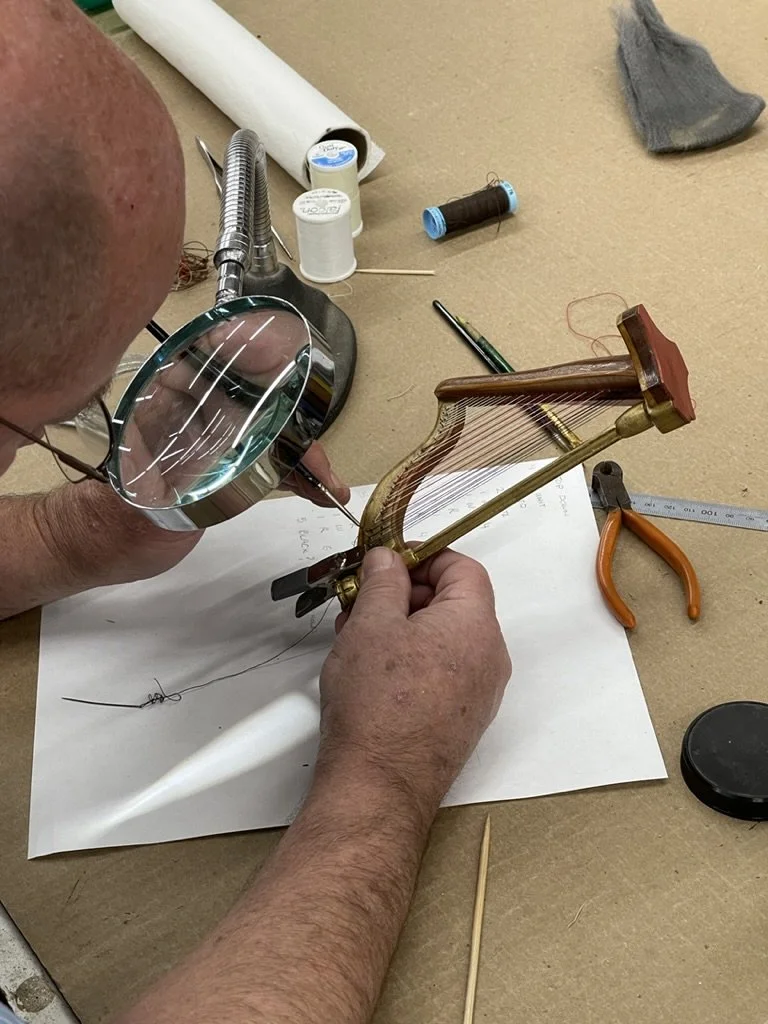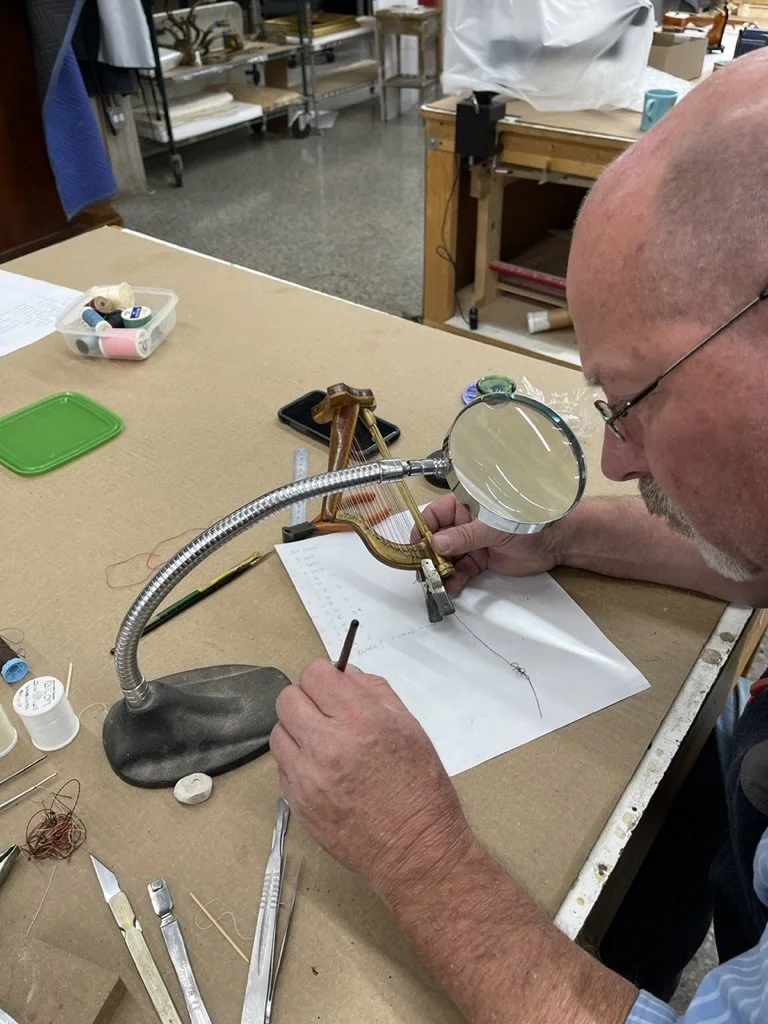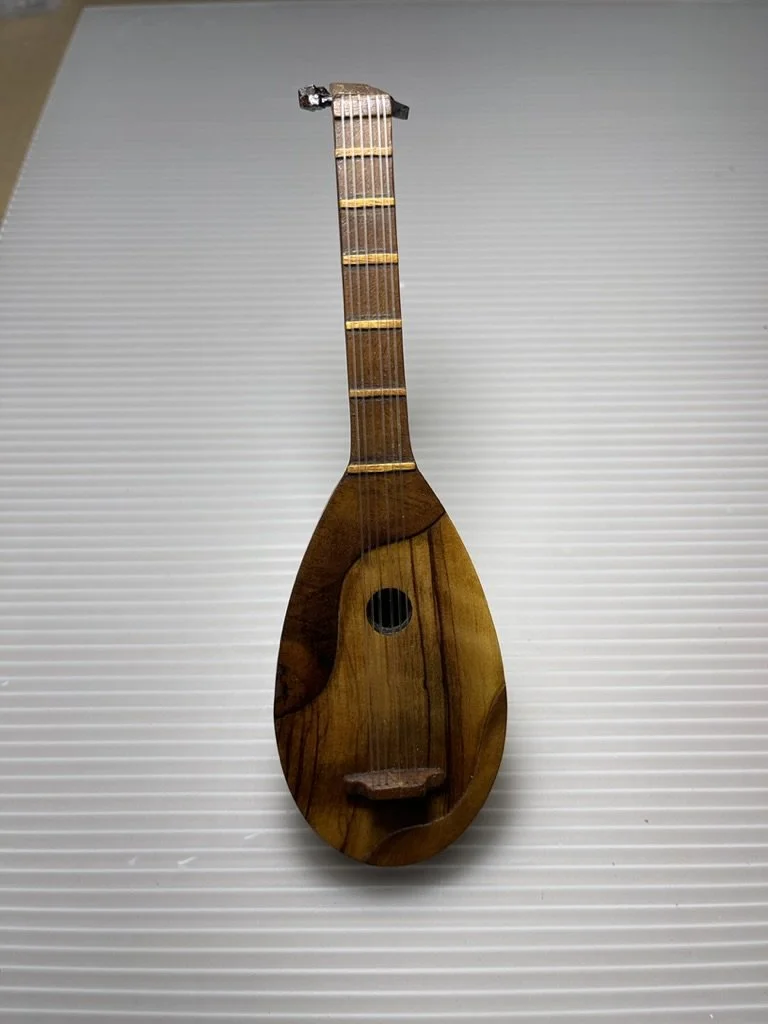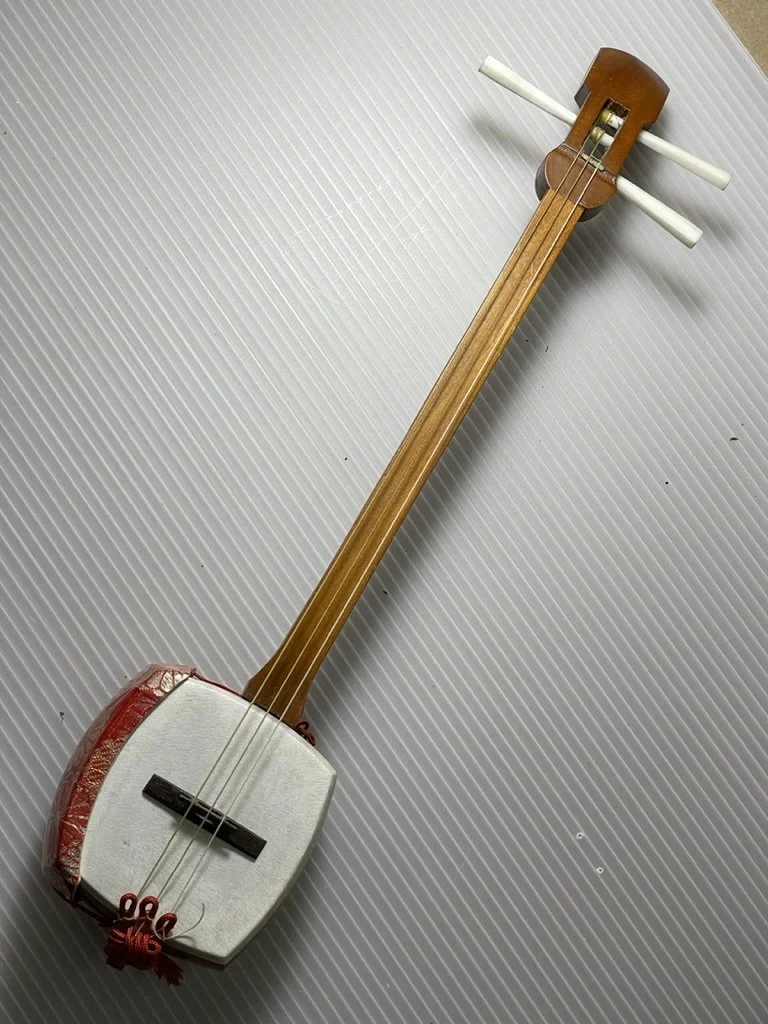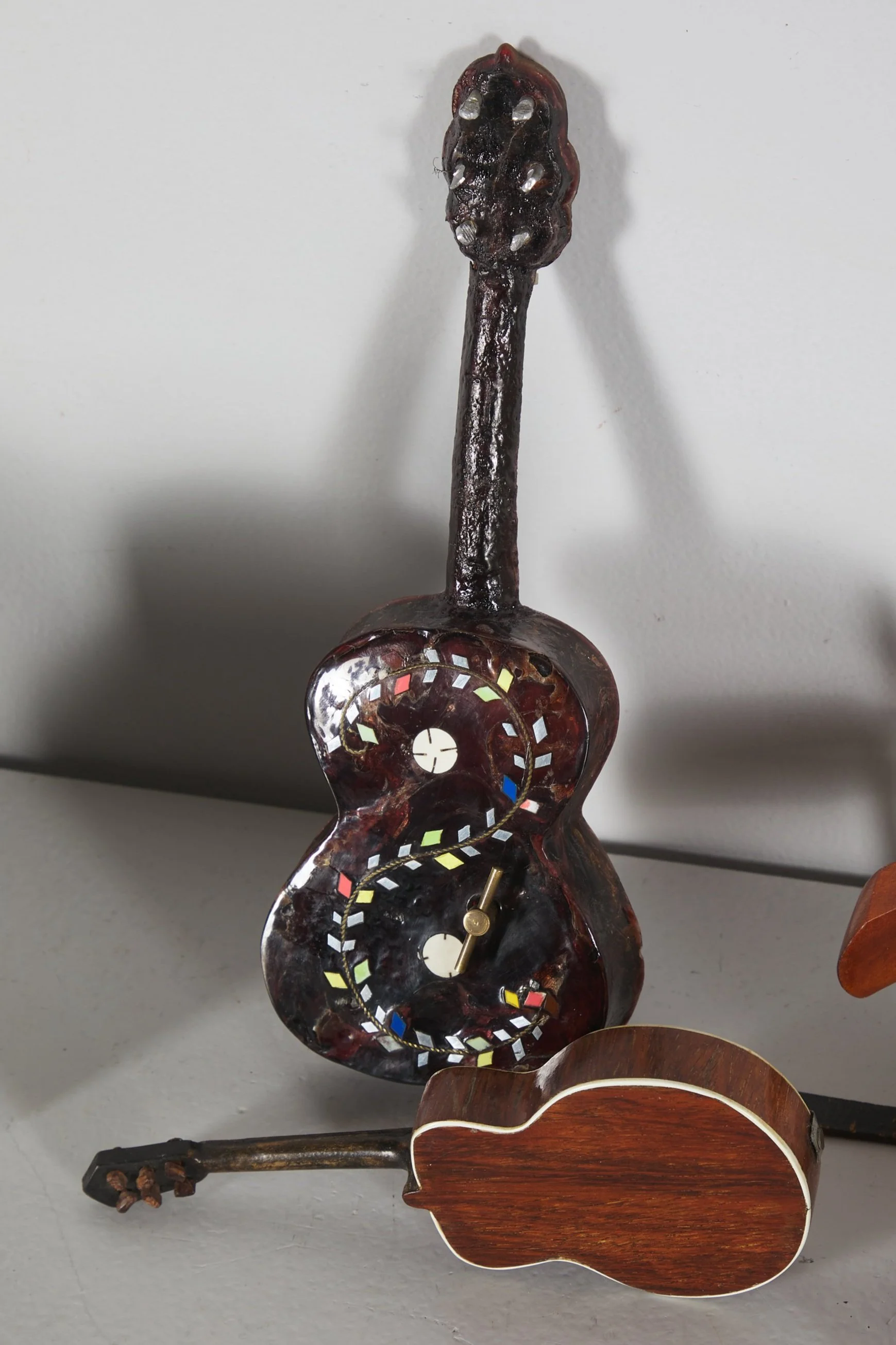Before treatment
"When I first heard that The Center had a collection of instruments coming into the lab for treatment, I was not envisioning that they would all fit on my desk mat." But fit they did - all thirteen miniature instruments in total that came under the care of Senior Conservator of Furniture Rob Kleeman. As Rob shared, the project was interesting due to its "scale," but the story behind the curios illustrates the immense size of their importance.
During treatment, all thirteen instruments fit on Rob’s desk mat.
Our client Bob shared, "My grandparents, Fannie and Max Targ, started the collection. Max was a musical instruments wholesaler/distributor. Fannie played the piano, and they both were great believers in the role and importance of music." Max was born in a small town in Poland, and while Max and Fannie immigrated to the United States before World War II, they lost almost all of their relatives in the Holocaust. In the early 1950s, they founded Americans for a Music Library in Israel (AMLI). A listing in the 1965 volume of The American Jewish Year Book states AMLI "seeks to promote, encourage, and render financial and other assistance to musical education in the State of Israel."
Listing of National Jewish Organizations, The American Jewish Year Book Vol. 66 (1965)
Bob estimates that nearly 90% of the instruments in Israel for years came through AMLI. While the precise count is unknown, this hardly seems an exaggeration. For 30 years, AMLI sent thousands of musical instruments to Israel and helped open ten libraries to provide sheet music, orchestral scores, and instrumental notes to musicians. The Eden - Tamir Music Center, a respected cultural institution that can still be visited today in Ein Kerem outside of Jerusalem, was originally the Targ Music Center. Founded in 1968 by Alexander Tamir and Bracha Eden, the music center was named for the Targs, who provided the initial grant to open the facility - along with two Steinway pianos.
“Mr. and Mrs. Max Targ Get Triple Honors,” The Sentinel, November 19, 1970
Bob shared that when his grandfather passed away, he and his mother gifted him the collection of miniatures. "My wife Marie and I continued to grow it as we traveled. However, at least 80% of the collection, including the oldest and nicest pieces, was collected by Max and Fannie."
Before Treatment
Upon arrival at The Center, Rob carefully examined the thirteen miniature stringed musical instruments. The majority of the strings on the pedal harp were broken. The six-string Renaissance lute has broken and missing strings. The violin was missing its bridge, and the violin's bow was missing horsehair.
Before Treatment
The faux tortoiseshell guitar music box showed a broken neck and broken strings, with the bridge and nut both loose. The faux tortoiseshell guitar depicting a bullfighter scene had broken strings. The spruce-top rosewood guitar was missing its bridge and pickguard. The small six-string lute with mother-of-pearl inlay was missing one tuning peg, nut, and bridge, and the lute had broken strings. The three four-string ukuleles with mother-of-pearl inlay were missing strings, one tuning peg, and two bridges.
Before Treatment
The hollow-body electric guitar was missing strings. The Japanese gotten has a broken string and bridge. The tortoise shell mandolin was missing strings, its bridge, and a small area of the mother-of-pearl inlay.
First, Rob cleaned every instrument to remove oils, waxes, and other contaminants. The missing components were replaced, including the broken pegs, strings, bridges, nuts, and pickguards. When asked about the challenges of the treatment, Rob noted, "replacing the missing bridges, strings, and tuning pegs was challenging entirely due to their size. In particular, piercing and carving the violin bridge required more than a little patience."
During treatment, fabricating a replacement violin bridge
During treatment, fabricating a replacement violin bridge
During treatment, with the replacement violin bridge
During treatment, fabricating replacement pegs
During treatment, fabricating replacement pegs
During treatment, with replacement pegs
Small areas of missing mother-of-pearl inlay and tortoiseshell also needed to be addressed. With ivory and tortoiseshell banned from use, those areas were addressed using appropriate replacement materials. Rob shared that "replacing the missing ivory and tortoiseshell was accomplished using modern synthetic reproduction materials and Tagua Nut (also known as vegetable ivory), which is a vegetable replacement for small ivory inlays."
During treatment, a replacement pickguard is fabricated
During treatment, a replacement pickguard is fabricated
During treatment, with the replacement pickguard
During treatment, missing mother of pearl elements are recreated with tagua nut
During treatment, Senior Furniture Conservator Stephen Ryan treats the miniature harp
During treatment, Senior Furniture Conservator Stephen Ryan treats the miniature harp
"Fannie and Max traveled a lot for business and pleasure – and their love of music and musical instruments caused them to start collecting miniatures from all over the world," shared Bob. "I don't know the provenance of each piece, but I remember going to their apartment when I was young and hearing about and seeing new pieces they had found to add to the collection – and I was always fascinated by it."
After treatment
After treatment
After treatment
After treatment
After treatment
After treatment
After treatment
After treatment
After treatment
Bob shared that while he had some musical training, he did not become a serious performer but a great appreciator instead. Bob is like his grandfather, who never played an instrument himself but was driven by his music appreciation and, in his own words, his belief that "no other media can provide the advantages that music does." During an interview, Max remarked, "in addition to instruments and the notes, there is something else an orchestra needs - an audience." As deep appreciators of all art forms, we at The Center couldn't agree more that for every work of art, there is an art lover who will celebrate its creation and value its presence. Though small, these miniature instruments are a powerful reminder of the impact of creating and supporting artwork in all its forms.
After treatment




